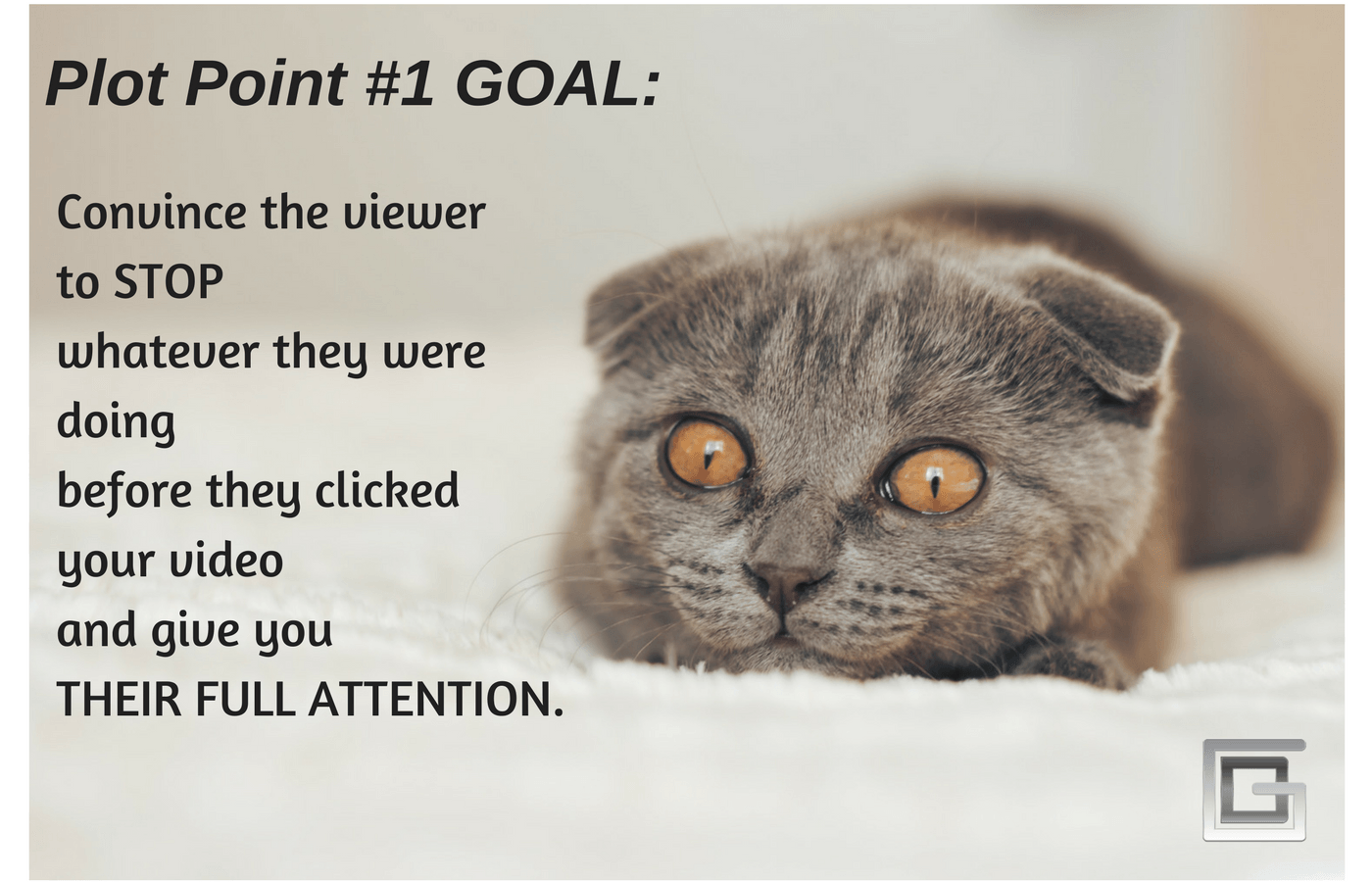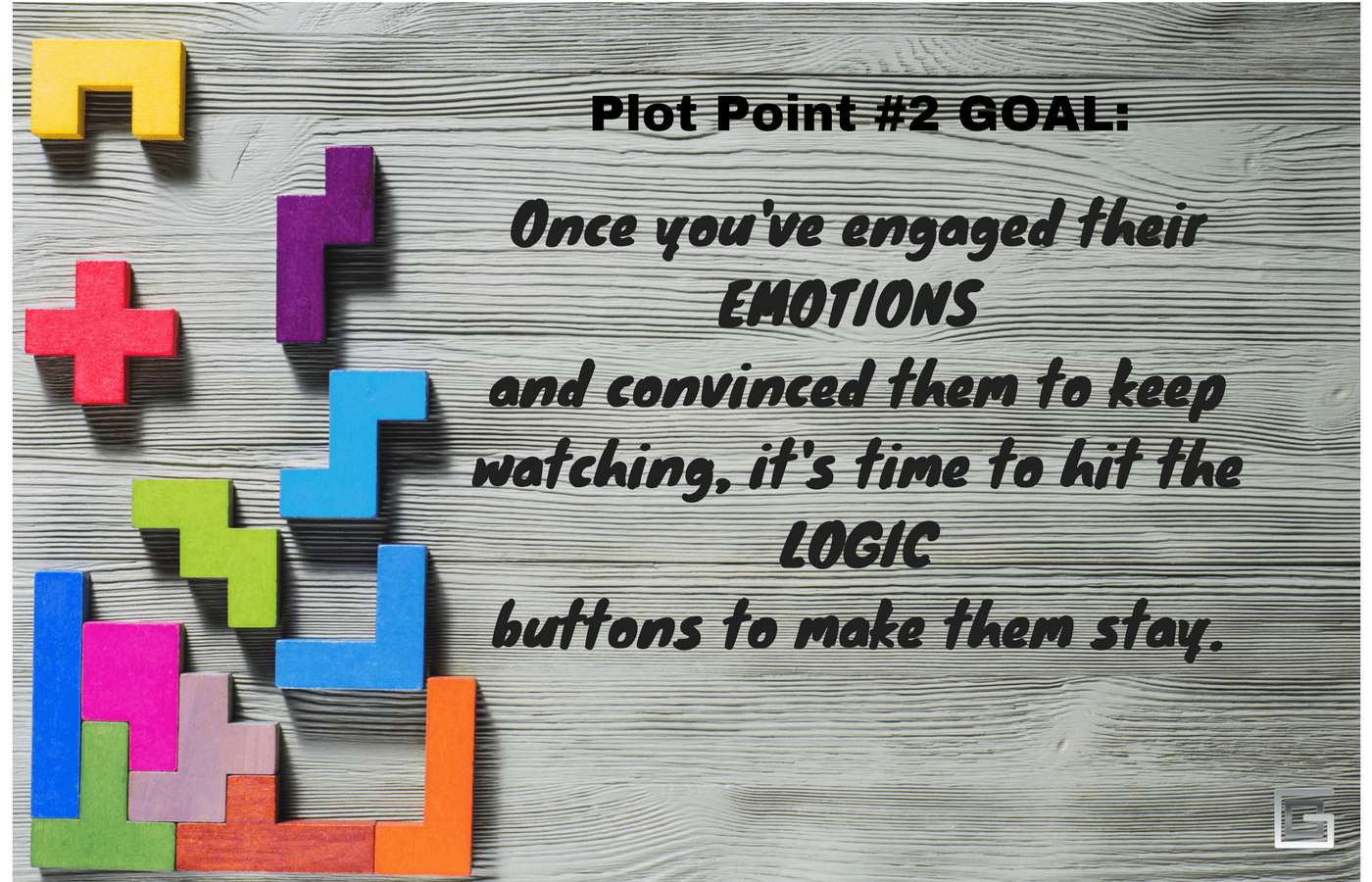This is a deep dive continuation of an earlier article. If you haven’t already, I encourage you to read the original post first.
Rock Solid Scripts that Sizzle
If you want to read the entire Video Sales Letter article series from the beginning, start here…
The First Five Critical Steps to Creating Sleek Video Sales Letters
It’s hard to know where to start when producing a Video Sales Letter (VSL) script.
- Do you begin with a shot of your product?
- Perhaps you should open with your best testimonial?
- What about a celebrity endorsement?
- Or maybe you should just introduce yourself and flash your credentials?
In order, the answer to those questions is no, no, no, and no.
We’ve been creating and producing VSLs for a looong time. We’ve tested, split-tested, retested, uptested, downtested (those last two are made up words, btw) so we’ve got a very good idea of what works and what doesn’t.
And there’s really only one kind of opening that we’ve found to be effective…
Plot Point #1: You WANT to watch this video and here’s why
You’re probably going to spend around 30-60 minutes of video giving the viewer reasons to buy, but you can’t cram all of that into your opening 1-2 minutes. This is why your opening has one goal, and one goal only…

Convince the viewer to stop whatever they were doing before they clicked on your ad to give your video their full attention.
It’s the same philosophy as writing a great headline for a lead capture page – you’re grabbing the visitor’s attention and asking them to focus on you. Except that, in this instance, you’re asking them to give up an unspecified amount of time to watch and listen to a lengthy infomercial.
It’s not an easy!
Begin by acknowledging to yourself that your viewer was probably in the middle of something else before they started watching your video. They might have searched for you or been directed by an affiliate but, depending on your marketing strategy, most people will have come across your VSL through a search engine, a pay-per-click ad, or a social media ad.
Whatever the reason, they probably didn’t start watching your VSL with the intention of sitting down to a lengthy sales presentation.
It’s a bit like channel-surfing when you stumble upon an infomercial. You probably didn’t turn on your TV in pursuit of a 30-minute presentation for The Baconator, but it catches your attention for a few seconds. You’re then going to make a decision, in that tiny amount of time, whether to keep watching or flick to another channel.
That’s what should be in your head when you write the opening lines of your VSL script. What reason can I give my viewer for WHY this video is worthy of their time and attention?
The answer to that question is always: “A benefit that engages the emotions.”
We call this the “snowball effect” because we know that, to a greater or lesser degree, people make decisions emotionally first and justify with logic later. What you’re aiming to do is twang the viewer’s emotions just enough that they stick around for a few minutes and hang on just a little bit further to see what’s next.
The next point ramps up the tension just enough to drive them toward the Key Plot Point that follows it. Which, in turn, raises the temperature a little more, and pushes the viewer to the next Plot Point, and so on and so on.
Before you know it, the viewer is rolling down the hill, gathering speed, and hurtling towards the “Add to cart” button.
In a way, this knowledge frees you up. Convincing the viewer to continue watching your video is a challenge, true.
But it means you don’t have to worry about trying to cram every feature, every benefit, every credential, and testimonial into the first 120 seconds.
All you have to do with your first Plot Point is highlight an emotionally-charged benefit of your product and give the viewer a specific understanding that they’re going to experience a great result if they just keep watching for a little longer.
Start with a one line introduction…
“Hi. My name is <FULL NAME>.”
That’s it. Don’t elaborate further and definitely don’t go into “bio” mode. You can establish your credentials later. Just state your name and go straight into your opening benefit.
“In this video I’m going to reveal how you can <attain this extraordinary outcome> and no longer have to struggle with <critical pain point>, even if you <have this common hurdle>.”
This is your big promise. Don’t mention your product. Don’t even mention any features of the product. Right now, it’s all benefit, benefit, benefit.
“In this video I’m going to reveal how you can increase the distance on your golf drive by at least 30%, without constantly hooking your ball into the sand. And you can do this, even if you can’t afford those fancy new clubs that your friends are using!”
“In the next few minutes I’m going to show you how to secure your PC from the smartest hackers on the planet, and protect ALL of your sensitive data, without slowing your computer down, and even if you have NO techy skills whatsoever.”
“In this presentation I’m going to share with you how you can trick your mind into pretending the world isn’t falling apart and that thermonuclear Armageddon isn’t inevitable, even if you’re spent the last ten years of your life living in a bunker while wearing a tin foil hat.”
After you’ve made your big promise, expand a little on the kind of solution that you’re going to reveal. This usually takes one of four forms:
- Big Picture Solution (an all-encompassing strategy for a specific outcome).
- Turbo Charger (an add-on solution that improves performance).
- Fire Fighter (a solution that solves a specific problem).
- System or Process (a step-by-step guide to accomplishing X).
Remember, it’s critical that you don’t give away any specifics about your product. Don’t lose sight of the fact that this is all about charging the emotions.
Your viewer is finally going to solve problem X or experience the joy of pleasure Y. And your presentation is going to reveal all!
Plot Point #2: This is important

Now that you’ve engaged the viewer’s emotions and convinced them to keep watching beyond your brief introduction, go straight in with some logical persuasion. Decisions might be made, more often than not, with the emotions, but there will always your logic group.
Hit the logic buttons now and you’ll have hit both ends of the spectrum within the first few minutes of your VSL.
Depending on the nature of your product, you might find it’s a simple task to establish that your solution is important. A strategy for protecting your email servers from Russian hackers, for instance, naturally feels critical in nature (or so you would think).
If you’re selling breadmaker machines, on the other hand, it’s harder to make an argument that watching your VSL is a matter of life and death.
The key is to identify why your product is important, specifically to your core customers, even if it isn’t important in the grand scheme of things.
Being able to make freshly baked bread, for example, isn’t going to bring about world peace. But if you have celiac disease or a wheat intolerance, being able to make your own gluten-free loaves, quickly and cost-effectively is MASSIVELY important.
What classes as important in the mind of your viewer is hugely relative.
In addition, importance can be attached, not just to the issue that you’re discussing, but also the nature of the VSL itself. Consider using one (or more) of the following three logical arguments:
- Social Proof: State briefly, without going into a ton of detail (this will come later), the success that others are having with your solution; success your viewer can also enjoy if they stick around.
- Big Reward: If your viewer keeps watching for just a few more minutes, you’re going to reward them with some essential information that is going to change their life for the better.
- Scarcity: You can’t say for certain how long you’re going to leave your video online, but it WILL be taken down in the near future. Your viewer needs to watch this video today because it might not be available tomorrow.
*****************************************************************
I can’t overstate the importance of the introduction but that doesn’t mean you should be paralyzed with fear about getting it wrong. Just remember to stay focused on your goal of getting your viewer to stick around for a few more minutes, and then a few more minutes…
And, besides, you’re going to monitor your stats like an eagle-eyed hawk (that’s some serious crossbreeding) and, if you get a lot of bounces within the first few minutes, you can simply record a new opening and splice it in.
You won’t know for certain if you’ve nailed it until you try, but if you focus on hitting the emotional triggers and then the logical triggers, you’ve an excellent chance of getting that snowball rolling.
Ready to host a webinar? Be sure to check out the Secrets to Webinar Mastery here!
